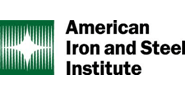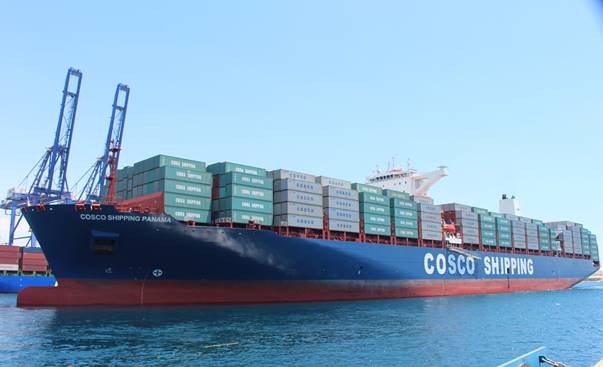
Get your muck boots out: Galv buyers see 'swampy' steel market continuing
Swampy. Sticky. Mushy. Murky. These were all words galvanized buyers used this week to describe the current state of the US steel market.

Swampy. Sticky. Mushy. Murky. These were all words galvanized buyers used this week to describe the current state of the US steel market.

Oil and gas drill rig activity in the US inched lower last week while holding steady in Canada, according to the latest report from oilfield services provider Baker Hughes.

After nearing a two-year high in May, the volume of finished steel entering the US market (referred to as ‘apparent steel supply’) receded in June, according to SMU’s latest analysis of data from the Department of Commerce and the American Iron and Steel Institute (AISI).

The wind energy sector continues to be a key feature of our forecasts for steel plate demand. As overall demand in China slows, it will assume a greater importance in shaping future global trends.

GrafTech cited a “challenging” part of the business cycle as its net loss widened in the second quarter.

Both iron ore and coking coal prices fell this week because of resistance from buyers. Iron ore prices have continued to fall throughout the past week, following sharp declines in steel prices in China, given no new policy announcement from the ‘Third Plenum’ meeting.

We have heard ominous warnings about a flood of Mexican steel threatening the US market. It's the kind of rhetoric that gets thrown around often with little regard for the facts. The reality is that the Mexican steel surge is simply not happening, and the US steel industry has consistently maintained a significant trade surplus in finished products with Mexico. In 2023 alone, this surplus exceeded $3 billion.

Demand has remained persistently weak across the globe for sheet steel, weighing on prices. US HR coil prices fell the furthest this week as high-volume, low-priced deals were transacted as mills looked to fill order books and competed with one another amid relative demand weakness. Meanwhile, European prices were also down due to low demand […]

Steel imports fell back in May from April’s recent high but remained elevated compared to the levels seen over the past year. A deeper dive into the data confirms what SMU has been hearing from sources: Coated sheet is driving the recent rise in overall import levels.

The Architecture Billings Index (ABI) from the American Institute of Architects (AIA) and Deltek indicated architecture firm billings remained soft through April

Domestic raw steel production ticked up again last week, now up to a three-week high according to the latest data released by the American Iron and Steel Institute (AISI).

Wolfe Research Managing Director Timna Tanners cautioned clients about the darkening clouds of a brewing steel sheet storm in the company's Basic Materials Weekly Webcast on Monday. “This one we’ve been talking about for a while, and we feel like the theme is coalescing here,” she said.

A surge in data center project planning pushed the Dodge Momentum Index (DMI), a leading indicator for the nonresidential construction sector, higher in April.

Construction spending in the US in March was basically steady from the previous month but showed notable year-on-year (y/y) growth.

Brazil’s chamber of foreign trade, Camex, has approved quotas on imports of 11 steel products and a 25% levy on shipments 30% above a product’s average import volume between 2020 and 2022.

An important economic indicator for the nonresidential construction industry declined in March to its lowest point in more than three years.

The number of active rigs in the US is now at the lowest level seen in over two years, while Canadian rigs have fallen to a four-month low.

GrafTech is reporting weak near-term demand for graphite electrodes as economic uncertainty constrains steel production globally.

Global steel demand will reach roughly 1.793 million metric tons (1.976 million short tons) this year, an increase of 1.7% over 2023, the World Steel Association (worldsteel) said in its updated Short Range Outlook report. The gain will come after a 0.5% contraction in steel demand in 2023. Demand is forecasted to increase another 1.2% […]

US construction spending in February was mostly steady from January but showed significant gains from last year.

After reaching a seven-month high in January, steel imports fell back 3% in February, according to preliminary Census data released earlier this week.

With Earth Day almost a month away, the world’s attention often turns to the manufacturing sector with calls for greener production processes.

Canada will soon require steel imports to report “country of melt and pour” information.

Falling steel prices at present are not a symptom of demand but of imports arriving into the US and to some parts of Mexico, Ternium’s CEO Maximo Vedoya said this week.

Weak demand and pricing for graphite electrodes combined with higher costs are forcing GrafTech to implement cost-cutting procedures and reduce production across its facilities.

The iron ore market has been largely calm, with China observing the Chinese New Year (CNY) holiday period, while demand in Europe and JKT has been slow to pick up. Supply has been somewhat weaker, but overall, the price has held steady. Supply from Port Hedland remained unchanged w/w despite Roy Hill having no shipments […]
Based on initial license data for January, steel imports appear to have risen to a six-month high, and flat-rolled steel imports to a seven-month high.
2023 was the third-lowest year for steel imports in the last decade, according to an SMU analysis of data from the US Department of Commerce.

Domestic steel shipments increased in December on-year but were down from the previous month, according to the latest data released by the American Iron and Steel Institute (AISI).

Just like doing business in any part of the steel supply chain, there are risks and unknowns in trading steel. But trading companies play an important part, helping businesses navigate the risks and unknowns as they pop up.